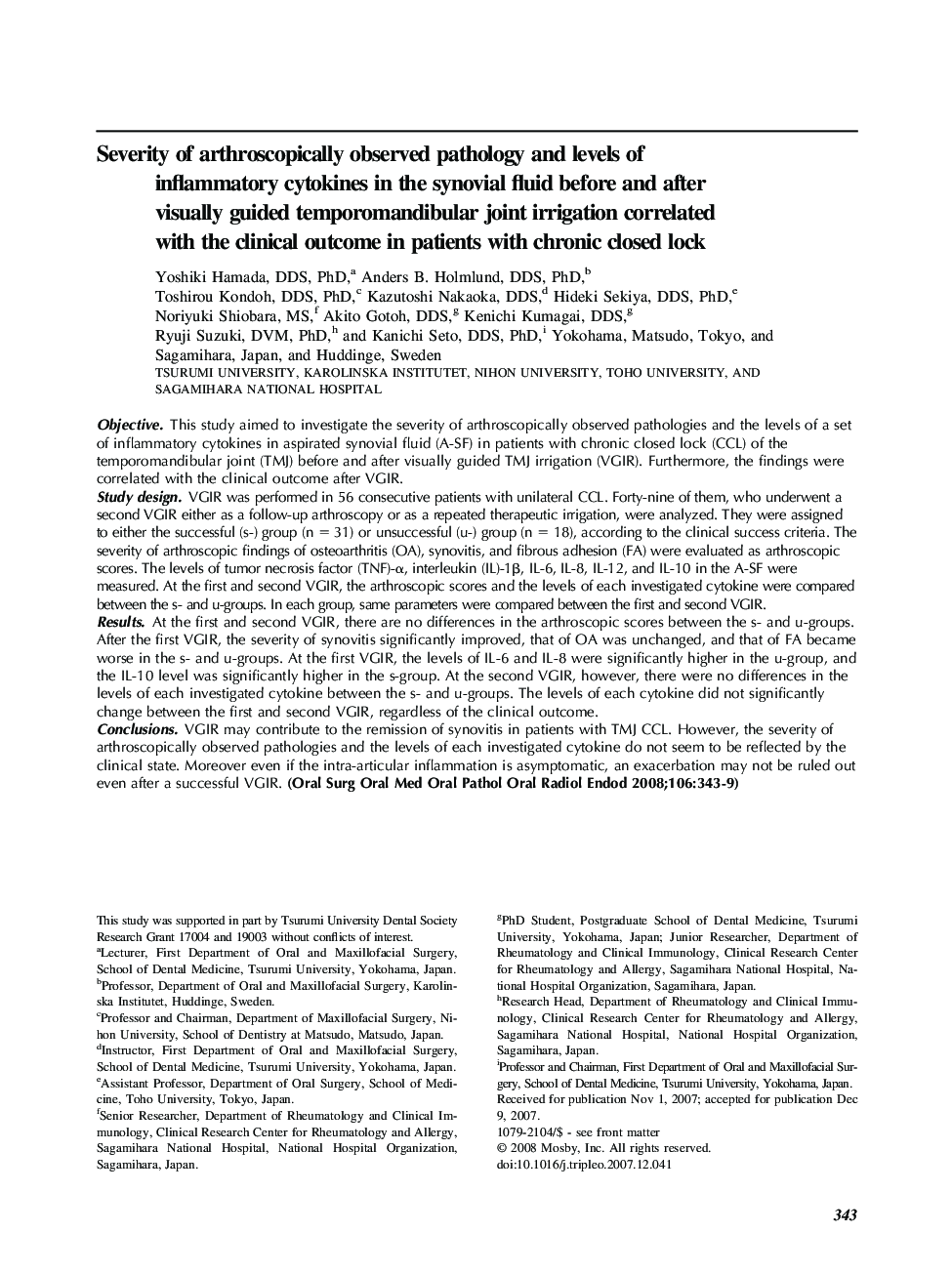| Article ID | Journal | Published Year | Pages | File Type |
|---|---|---|---|---|
| 3168497 | Oral Surgery, Oral Medicine, Oral Pathology, Oral Radiology, and Endodontology | 2008 | 7 Pages |
ObjectiveThis study aimed to investigate the severity of arthroscopically observed pathologies and the levels of a set of inflammatory cytokines in aspirated synovial fluid (A-SF) in patients with chronic closed lock (CCL) of the temporomandibular joint (TMJ) before and after visually guided TMJ irrigation (VGIR). Furthermore, the findings were correlated with the clinical outcome after VGIR.Study designVGIR was performed in 56 consecutive patients with unilateral CCL. Forty-nine of them, who underwent a second VGIR either as a follow-up arthroscopy or as a repeated therapeutic irrigation, were analyzed. They were assigned to either the successful (s-) group (n = 31) or unsuccessful (u-) group (n = 18), according to the clinical success criteria. The severity of arthroscopic findings of osteoarthritis (OA), synovitis, and fibrous adhesion (FA) were evaluated as arthroscopic scores. The levels of tumor necrosis factor (TNF)-α, interleukin (IL)-1β, IL-6, IL-8, IL-12, and IL-10 in the A-SF were measured. At the first and second VGIR, the arthroscopic scores and the levels of each investigated cytokine were compared between the s- and u-groups. In each group, same parameters were compared between the first and second VGIR.ResultsAt the first and second VGIR, there are no differences in the arthroscopic scores between the s- and u-groups. After the first VGIR, the severity of synovitis significantly improved, that of OA was unchanged, and that of FA became worse in the s- and u-groups. At the first VGIR, the levels of IL-6 and IL-8 were significantly higher in the u-group, and the IL-10 level was significantly higher in the s-group. At the second VGIR, however, there were no differences in the levels of each investigated cytokine between the s- and u-groups. The levels of each cytokine did not significantly change between the first and second VGIR, regardless of the clinical outcome.ConclusionsVGIR may contribute to the remission of synovitis in patients with TMJ CCL. However, the severity of arthroscopically observed pathologies and the levels of each investigated cytokine do not seem to be reflected by the clinical state. Moreover even if the intra-articular inflammation is asymptomatic, an exacerbation may not be ruled out even after a successful VGIR.
